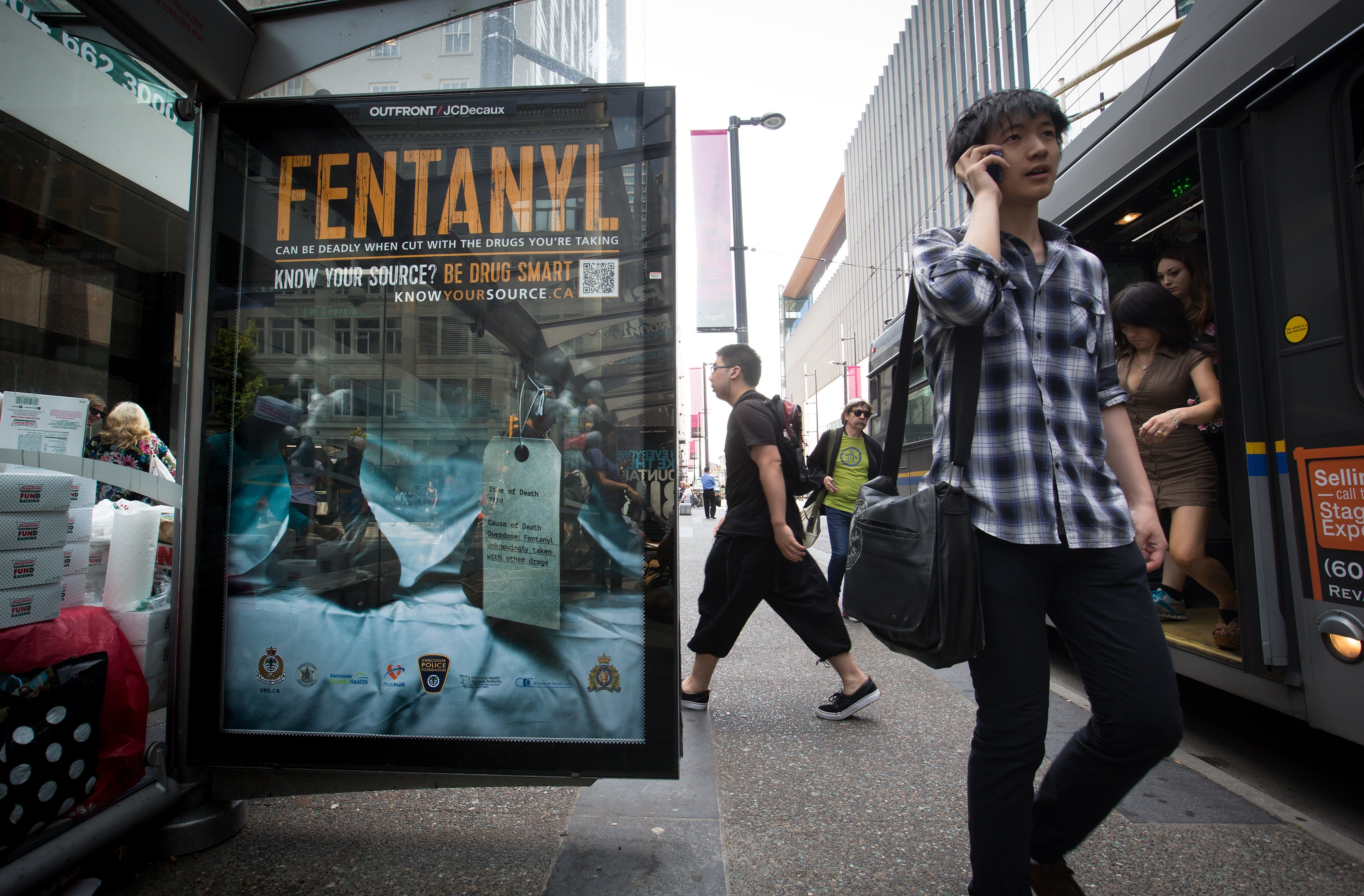More than 50,000 Canadians have succumbed to opioids since 2016. People walk past a bus shelter advertisement warning of the dangers of fentanyl on Granville Street in Vancouver, B.C., on Aug. 12, 2015.DARRYL DYCK/The Globe and Mail
Of all the pretexts Donald Trump has used for his unprovoked economic assault on this country, the most ridiculous is his claim that the United States is being flooded with fentanyl from Canada.
The RCMP sees no evidence of it. Nor do other experts in drug trafficking. Alberta says that if there is a flood, it is flowing in the opposite direction. Only a couple of weeks ago, border agents there found 186 kilograms of methamphetamine and 42 kilos of cocaine in two Canada-bound trucks.
The White House claims that 43 pounds of fentanyl was seized at the northern border of the United States in the past fiscal year. That is a drop in the bucket beside the 21,000 pounds seized at its border with Mexico, home to so many powerful drug cartels.
And even that 43-pound figure is grossly misleading. A Globe and Mail investigation found that while the drugs may have been seized in the border region, they did not necessarily come from Canada. Police in the Spokane sector of Washington state told The Globe that, in fact, most of the drugs that flow through the Pacific Northwest come from Mexico.
Investigation: White House using misleading fentanyl data to justify tariffs
Yet almost daily, Mr. Trump or his yes men rant about the awful toll Canadian fentanyl is inflicting on Americans. “Canada is killing our people,” Vice-President JD Vance reportedly told Prime Minister Justin Trudeau this week.
If he wants to play that game, we could just as easily say the United States is killing ours. More than 50,000 Canadians have succumbed to opioids since 2016. About one person dies of an overdose every hour.
The opioid crisis began in America. Huge pharmaceutical companies started marketing new painkillers that they claimed were non-addictive. Pill mills churned out rivers of the meds, which soon found their way into hard-up parts of the U.S., such as Appalachia.
Similar practices spread to Canada: aggressive marketing of pain pills, lax prescribing by doctors. Many of those who took the pills, often for work injuries or chronic pain, ended up addicted. When their doctors cut them off, some went to the street for their drugs.
Then along came something even more powerful, even more addictive: fentanyl, a synthetic opioid. Invented as a surgical anesthetic, it first appeared as a street drug in California. It, too, spread north of the border.
So the idea that America is the victim of a crisis imposed on it by its neighbours is upside down.
The United States is the source of the problem. As Mexican President Claudia Sheinbaum points out, the drug trade exists mainly to serve American users. That trade has devastated her country. The struggle between the government and the cartels, and among the cartels themselves, has claimed many thousands of Mexican lives.
It has hurt Canada, too. This country has seen its streets flooded with cheap drugs, worsening its crisis of mental illness, homelessness and public disorder. If anyone should be angry, it is us. And not just about fentanyl.
Most of the guns used by Canadian gangs come from the United States. If Mr. Trump is annoyed about the small stream of fentanyl crossing the border from Canada, he should be able to understand how we feel about the deluge of firearms we face from a country that has more guns than people yet stubbornly refuses to bring in any meaningful gun control – even when its children are mowed down in their schools.
In the end, pointing fingers doesn’t help anyone. To say that drugs move mainly this way or that way is beside the point. They flow every which way – north to south, south to north, east to west, west to east. The drug market on this continent is as integrated as the automobile industry. This is a shared problem, best addressed not through confrontation but co-operation in policing and public health. When it comes to the drug crisis, we are all in the same boat, whether Mr. Trump likes it or not.
But if the Americans insist on finding someone to blame, they need only look in the nearest mirror.
The post The U.S. is the real source of the fentanyl crisis, not Canada appeared first on World Online.

